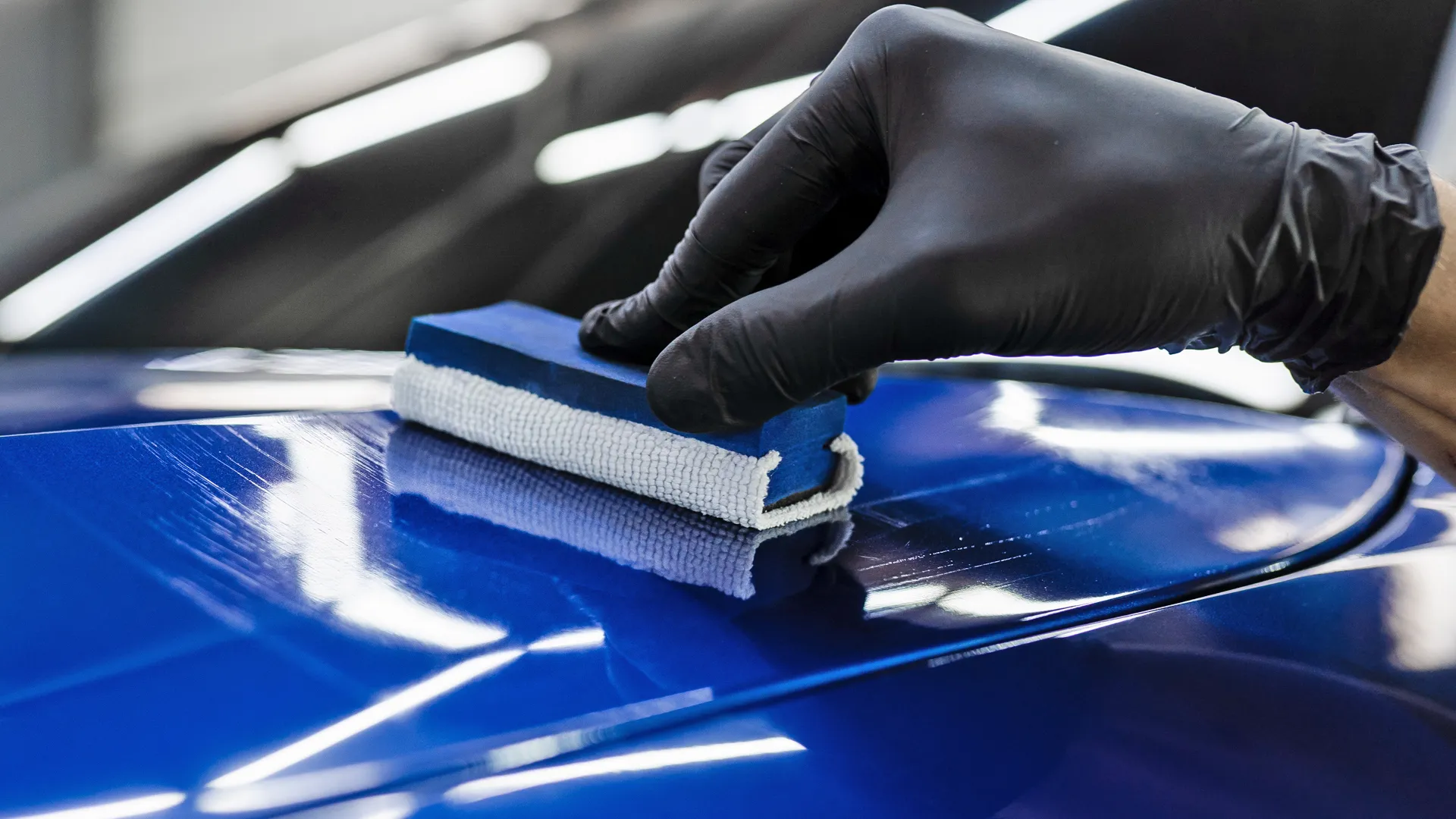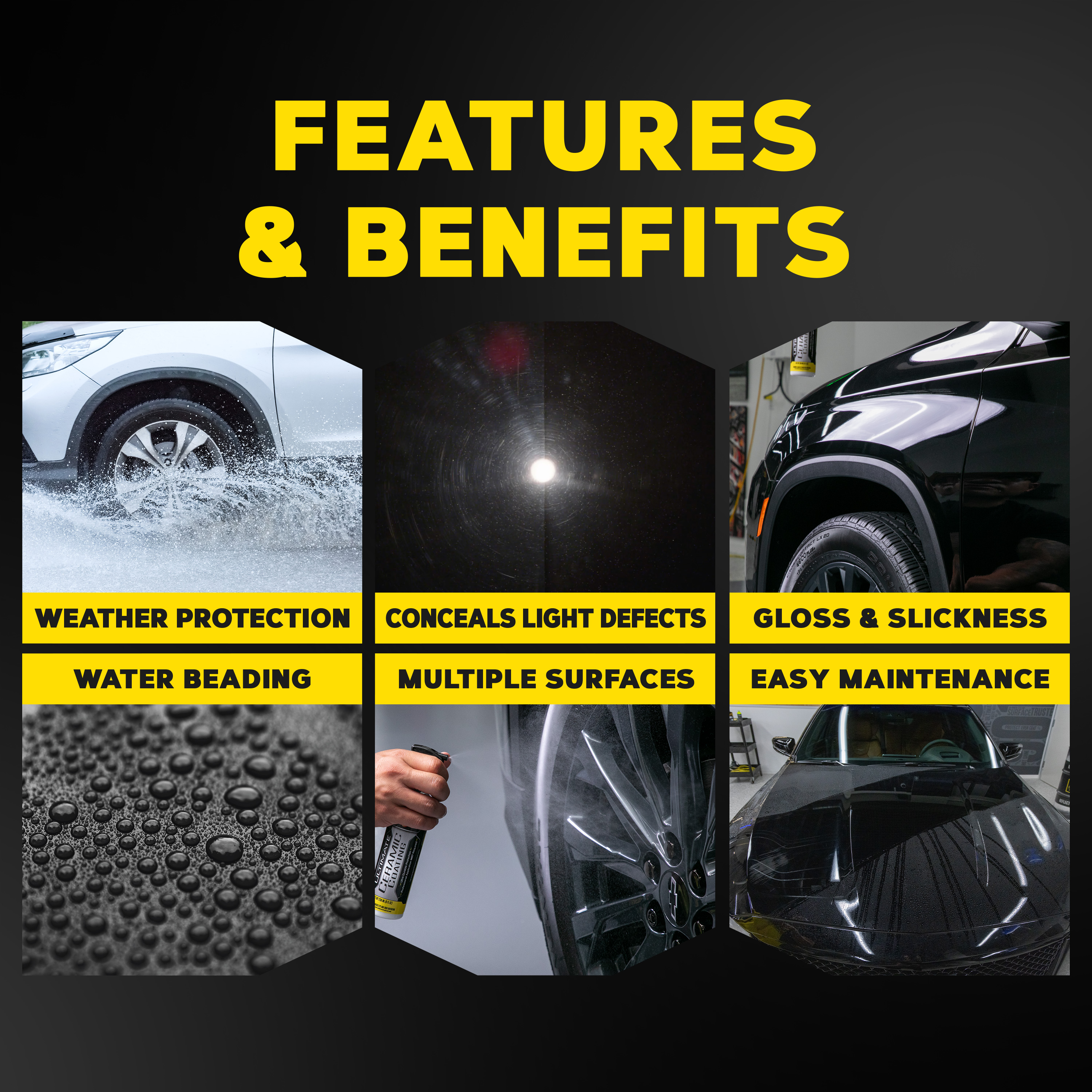Ceramic Coating vs Traditional Wax: Which Offers Better Protection?
Ceramic Coating vs Traditional Wax: Which Offers Better Protection?
Blog Article
Ceramic Layer vs. Traditional Wax: Which Offers Better Long-Term Protection?
The debate between ceramic finishings and standard wax for lorry defense has actually amassed substantial focus amongst vehicle lovers and experts alike. While both offer the function of securing paint, their distinctions in longevity, application, and lasting upkeep expenses may influence a consumer's choice. Ceramic coverings boast remarkable long life and resistance to ecological variables, yet the intricacy of their application increases concerns regarding access and usefulness. As we discover these contrasting alternatives, it ends up being crucial to take into consideration not just the prompt advantages however likewise the implications for car care gradually.
Review of Ceramic Finish
Ceramic finishing has gotten significant appeal among auto fanatics and detailers alike because of its advanced safety high qualities. This innovative modern technology is made to develop a long lasting, hydrophobic shield over an automobile's paint surface area, substantially improving its resistance to environmental contaminants such as dust, UV rays, and chemical spots. Unlike conventional wax, which offers a short-term layer of security, ceramic finishings bond at a molecular degree with the paint, using lasting durability-- commonly prolonging beyond two years with proper upkeep.
The application process includes careful preparation of the automobile's surface, consisting of cleaning and brightening to make certain optimum attachment. As soon as used, the layer treatments to develop a robust layer that not only adds deepness and gloss to the paint however likewise simplifies maintenance. With its hydrophobic residential properties, ceramic finishing enables water and dirt to glide off more quickly, lowering the frequency of washes and reducing the danger of swirl marks.
Moreover, ceramic finishings are offered in different formulations, enabling individuals to choose products tailored to their details requirements and choices. Generally, ceramic finish represents a significant improvement in paint security innovation, providing remarkable efficiency compared to conventional choices.
Introduction of Typical Wax
Commonly considered a staple in auto care, wax functions as a preferred option for those seeking a straightforward technique to enhance and protect their automobile's paint - ceramic coating. Automotive wax generally makes up natural active ingredients, such as carnauba, or artificial compounds, designed to create a protective layer externally of the paint. This layer not just improves the car's gloss and beam but likewise provides an obstacle against ecological pollutants
The application of wax is generally straightforward, making it obtainable for both experts and DIY enthusiasts. It can be applied by hand or equipment, enabling convenience in the outlining procedure. As soon as used, wax calls for a healing duration, after which it solidifies to create a protective covering. Wax is additionally understood for its ability to drive away water, advertising a beading impact that assists in the prevention of water areas and rust.
However, while wax works for improving the visual allure of a car, it is essential to keep in mind that the security it supplies might require a lot more regular reapplication contrasted to alternate products, such as ceramic finishings. Overall, conventional wax stays a preferred alternative for those focusing on ease of use and instant aesthetic renovation.
Sturdiness and Longevity Comparison
While both ceramic finishes and typical wax deal safety advantages for automobile paint, their durability and long life vary dramatically. Traditional wax, generally made from natural carnauba or synthetic polymers, normally supplies a protective layer that lasts around three to six months. This relatively short lifespan necessitates regular reapplication to maintain ideal anchor defense.
On the other hand, ceramic finishings are crafted from advanced nanotechnology, developing a covalent bond with the paint surface area. This causes a robust, hydrophobic layer that can withstand for 2 to 5 years, relying on the product and ecological conditions. The remarkable toughness of ceramic coverings is credited to their chemical structure, which uses enhanced resistance to scratches, UV rays, and oxidation.

Defense Versus Environmental Aspects
Safeguarding a car's paint from ecological variables is vital for preserving its look and worth gradually. Automobiles are constantly exposed to a selection of aspects, including UV rays, bird droppings, tree sap, acid rainfall, and roadway gunk, all of which can compromise the honesty of the paintwork.
Ceramic finishes supply a robust protection against these environmental assailants. Unlike conventional wax, which can weaken swiftly under UV direct exposure, ceramic finishes create a sturdy, hydrophobic layer that withstands the unsafe effects of sunlight and toxic wastes. This innovative modern technology creates a chemical bond with the car's surface, using remarkable defense that lasts for many years, also in rough conditions.
Traditional wax, while less complicated to use, typically requires frequent reapplication and provides limited resistance to pollutants and UV rays. In time, it can break down, leaving the paint prone to scrapes and oxidation. In comparison, ceramic layers keep their safety top qualities much longer, substantially lowering the threat of paint damages and ensuring that the lorry retains its aesthetic allure. Because of this, ceramic coverings are progressively identified as the premium choice for long-lasting protection against environmental aspects.
Application and Upkeep Differences
The methods of application and subsequent maintenance useful content for ceramic coverings and conventional wax vary dramatically, impacting the overall user experience and effectiveness of each item. Ceramic layers need an even more intricate application process, typically involving surface prep work that consists of washing, sanitizing, and brightening the lorry. When the surface is prepared, the ceramic layer is used in a regulated atmosphere, frequently requiring specialist expertise to make certain correct curing and bonding to the paint.

While both items boost automobile look, the longer-lasting security used by ceramic layers may validate their preliminary investment, despite the more demanding application process. On the other hand, conventional wax stays a preferred option for those looking for a less complex, albeit temporary, solution.

Conclusion
Finally, ceramic finishes show substantial advantages over typical wax in terms of resilience and ecological protection. With a life expectancy extending 2 to 5 years and premium resistance to UV rays, dirt, and chemical stains, ceramic finishes provide a more effective service for long-term vehicle upkeep. The application process may call for specialist knowledge, the resulting expense savings and lowered regularity of reapplication underscore the value of ceramic layers for those looking for optimum lorry protection.
The debate between ceramic coatings and typical wax for car security has garnered considerable interest amongst automobile fanatics and experts alike. Unlike standard wax, which supplies a temporary layer of protection, ceramic finishes bond at Bonuses a molecular level with the paint, supplying lasting sturdiness-- usually expanding beyond two years with correct upkeep.
While both ceramic finishes and typical wax deal protective benefits for automotive paint, their longevity and longevity differ significantly. For automobile lovers seeking lasting defense, ceramic coverings provide a compelling advantage over conventional wax items.
In final thought, ceramic coverings show considerable benefits over standard wax in terms of resilience and ecological protection.
Report this page